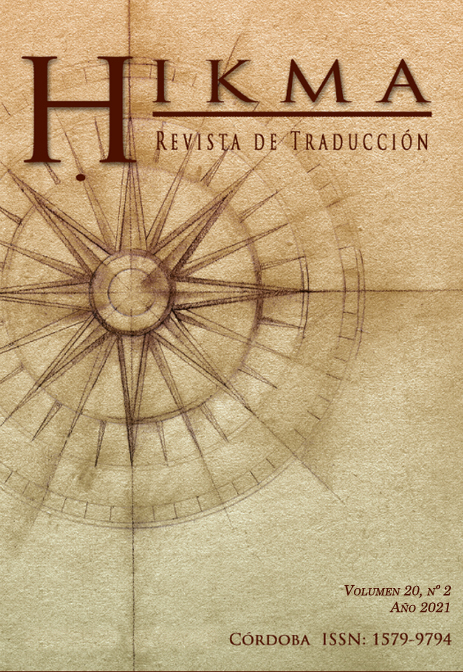Machine translation and post-editing in the dubbing classroom: results from a teaching experience
Main Article Content
Abstract
Interest in machine translation (MT) and post-editing (PE) is coming on apace, and an increasing number of translation fields are trying to incorporate them into their professional environment. This is especially true in the field of technical translation and in some legal genres. MT is also gradually beginning to intersect with audiovisual translation (AVT), a discipline from which it has traditionally remained distant, due to the difficulty of fully processing the information generated by the audiovisual text. Although these projects are still incipient and mainly explore the subtitling mode, it is expected that in the close future technological possibilities will improve and the necessary pre-editing of the source text for MT purposes will be further developed, taking into account the particularities of other AVT modes such as dubbing or voice-over.
In this article, we present the results of a project carried out in the dubbing classroom. It aimed to start exploring the possibilities of applying several online, free-access MT tools to translation for dubbing. To this end, the 40 participants in the experiment performed two translation tasks, one human and the other using MT and PE, and the time spent in both experiences was monitored as well as the main errors generated by MT. The results point to a still considerable difficulty in the use of MT in dubbing, which, however, could be further explored by incorporating PE to the dubbing script preparation phase.
Downloads
Article Details

This work is licensed under a Creative Commons Attribution-NonCommercial-ShareAlike 4.0 International License.
Authors who publish with this journal agree to the following terms:
1. Authors retain copyright and grant the journal right of first publication with the work simultaneously licensed under a Creative Commons Attribution License that allows others to share the work with an acknowledgement of the work's authorship and initial publication in this journal.
2. Authors are able to enter into separate, additional contractual arrangements for the non-exclusive distribution of the journal's published version of the work (e.g., post it to an institutional repository or publish it in a book), with an acknowledgement of its initial publication in this journal.
3. Authors are permitted and encouraged to post their work online (e.g., in institutional repositories or on their website) prior to and during the submission process, as it can lead to productive exchanges, as well as earlier and greater citation of published work (See The Effect of Open Access).

